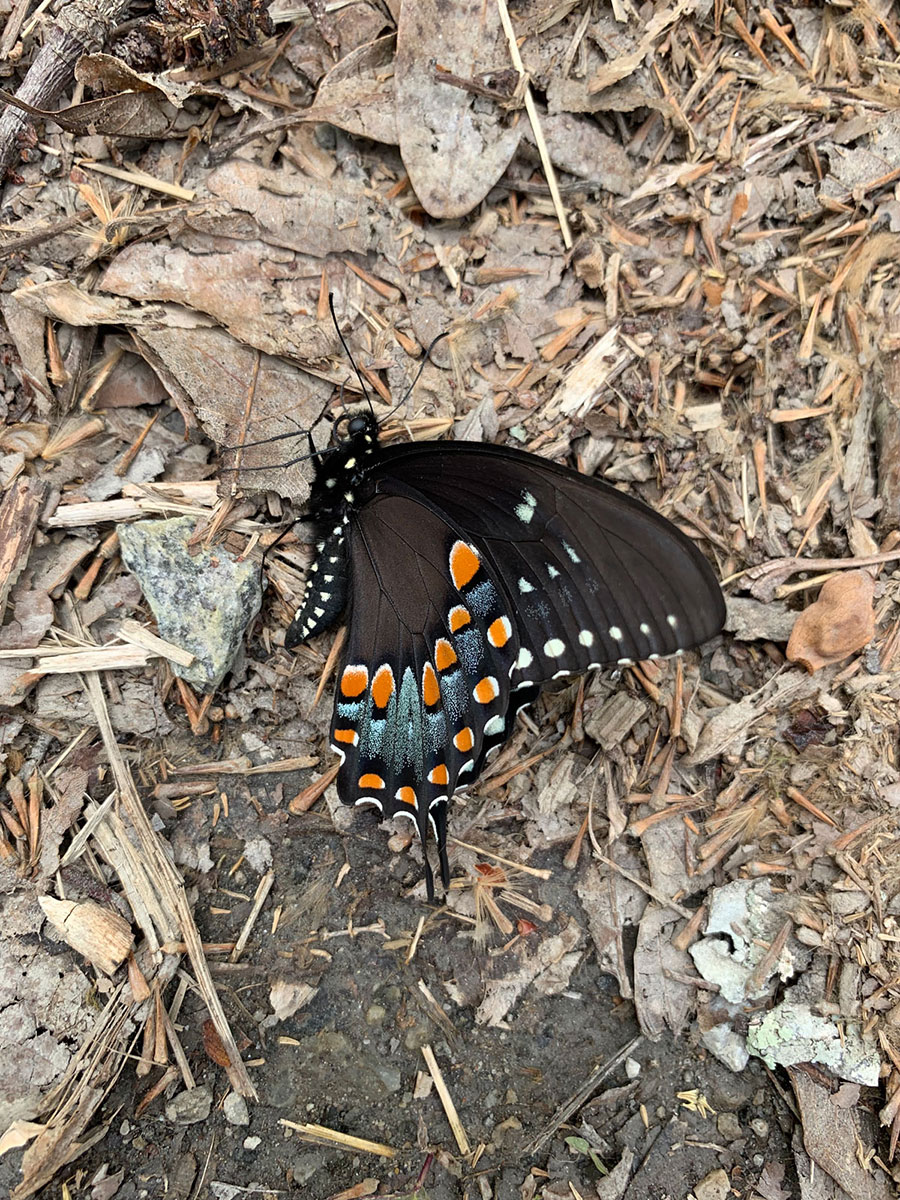If you’ve already looked at the Tiger Swallowtail, you know that these two butterflies can easily be confused! Check out the Tiger Swallowtail page to read about how they are different and how to tell them apart.
These butterflies typically fly low to the ground, and when they feed on nectar, their wings continue to open and close slowly (oh yeah! I’ve seen that! huh!)
The larvae and caterpillar stage of this butterfly feed on… you guessed it! Spicebush, as well as sassafras. Both plants which are also found in abundance around here. The insect overwinters in the pupae stage, usually attached to vegetation, which is why it’s important not to mow everything in the fall. I have a big meadow and field, that I leave until at least February to mow. This provides not only food and shelter for various birds and small mammals, but it also leaves the insects who are overwintering, like the butterfly, or various bees and wasps that overwinter inside the stems of grasses intact.
Size: up to 4" wide with wings open Family: Papilionidae Habitat: Deciduous forests and woody swamps, open plains. Identification: "Its body is mostly black. The upperside of the hindwing is blue-green (male) or iridescent blue (female) in appearance. The underside of the hindwing has orange spots and a rounded extension from the back edge. The spicebush swallowtail caterpillar is dark green on the back becoming whiter on the sides. This smooth larva has two, large, round black spots with orange or yellow edges near the head followed by four lines of blue spots with black edges." From this site










